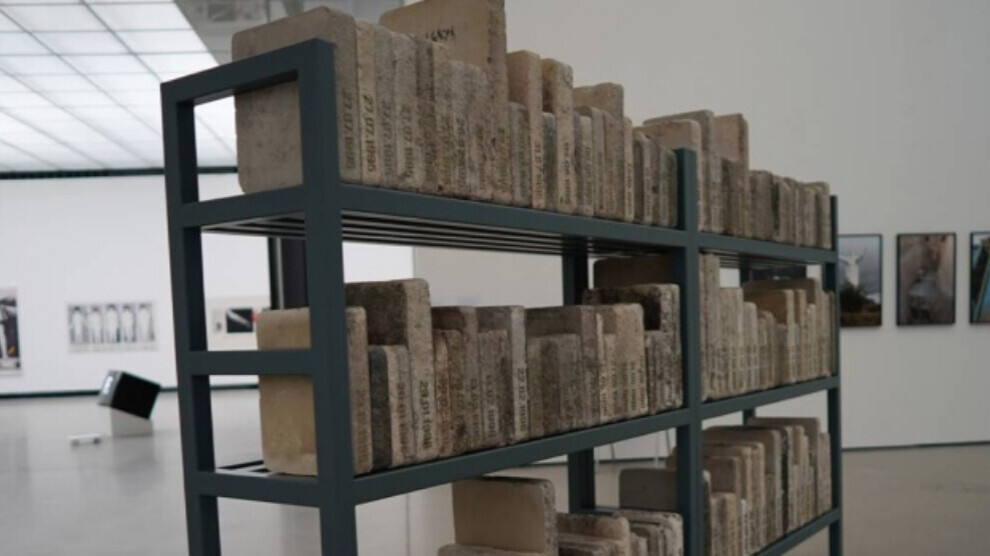The diary of Gurbetelli Ersöz exhibited in Lausanne
The diary of Gurbetelli Ersöz, Turkey's first female editor-in-chief, engraved on stone tablets by visual artist Banu Cennetoğlu, will be exhibited on 17 February at the Lausanne Canton Museum.
The diary of Gurbetelli Ersöz, Turkey's first female editor-in-chief, engraved on stone tablets by visual artist Banu Cennetoğlu, will be exhibited on 17 February at the Lausanne Canton Museum.

The diary of Gurbetelli Ersöz, Turkey's first female editor-in-chief, engraved on stone tablets by visual artist Banu Cennetoğlu, will be exhibited on 17 February at the Lausanne Canton Museum.
She was one of the leading figures in the tradition of free press against a system that not only ignored women but also aimed to murder them and exercise on them all kinds of violence.
The Halabja Massacre and the Chernobyl disaster were a turning point in Gurbetelli’s life.
She became Turkey's first female editor-in-chief for the daily Özgür Gündem. She opposed all oppression and intimidation policies of the period.
Gurbetelli Ersöz was born in the Akbulut village of Elazığ’s Palu district. When she was born, her father was a worker in Germany and that’s why she was named Gurbetelli (foreign place). When she was a third-grade student at primary school, her difference with her friends and teachers was her language. She began to ask why, how at that time. She studied chemistry at Çukurova University. Later, she worked as an assistant at Çukurova University. She began to get involved actively in politics.
Gurbetelli Ersöz then became a journalist and she was detained on December 10, 1990. She was kept in detention for 15 days and tortured. After being kept in detention for 15 days, she was sent to Malatya Prison and held in prison for two years. After being released, she kept doing journalism. On April 23, 1993, she began to work for Özgür Gündem Newspaper. Then, she became the editor-in-chief of the newspaper and became Turkey’s first female editor-in-chief.
On December 10, 1993, the building of the newspaper was raided by hundreds of police. Gurbetelli Ersöz was one of the detained journalists. After being kept in detention for 13 days, she was sent to Sağmalcılar Prison. She was released from the prison when the first hearing of the trial opened against her was held in June 1994. She kept working as a journalist for a while but then she decided to wage her struggle in another field. She joined the armed struggle. On October 8, 1997, she fell as a martyr in a clash with the Kurdish Democratic Party (KDP).
With her stance against male language and mentality, she wrote a path for today's female journalists.